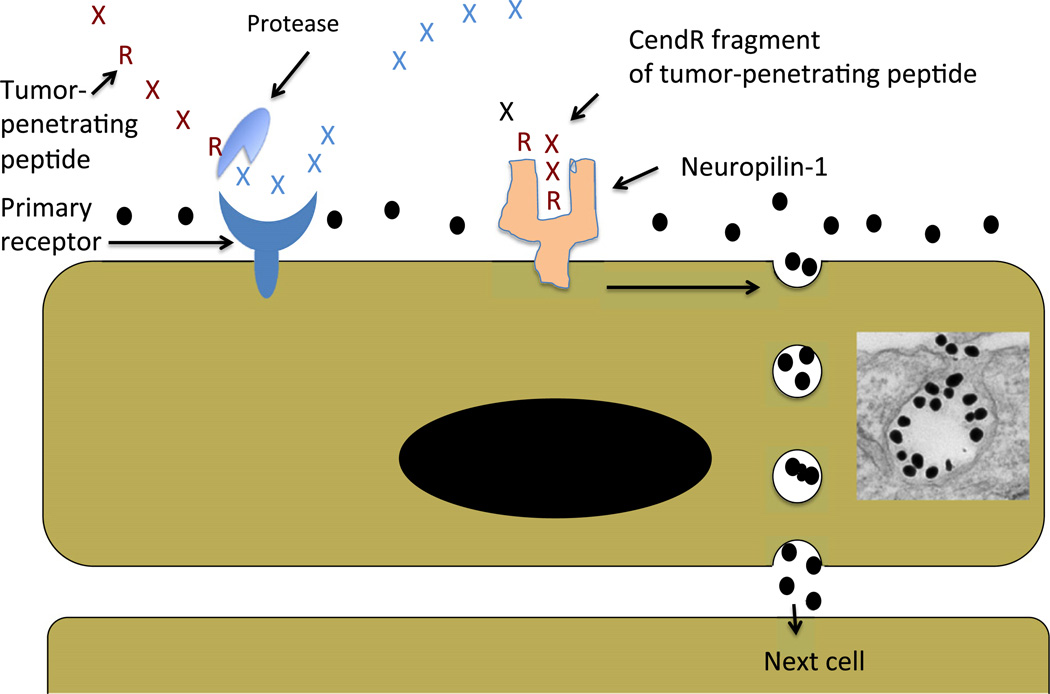Fig. 1.
Schematic representation of the CendR trans-tissue transport pathway. A tumor-penetrating peptide with a cryptic CendR motif penetrates tumor tissue in a 3-step process: (i) The peptide binds to a primary receptor on tumor endothelium. In iRGD, the RGD motif recognizes the αvβ3/αvβ5 integrins; the primary receptor for the LyP-1 family of peptides is p32/gC1qR. (ii) The peptide is then cleaved by proteases to expose the cryptic CendR element, R/KXXR/K, at the C-terminus; and, (iii) the CendR element mediates binding to neuropilin-1 (NRP-1), inducing vascular and tissue permeability. See the text for details. Note that CendR effect enhances the tissue penetration of molecules (depicted here as a black dots) that are co-administered with the peptide [25], as well as of cargo coupled to the peptide [10]. The inset shows an electron microscopic image of a CendR endocytic vesicle that is budding from the cell surface into the cytoplasm and contains CendR peptide-coated gold nanoparticles (dark dots) (see [24]).

